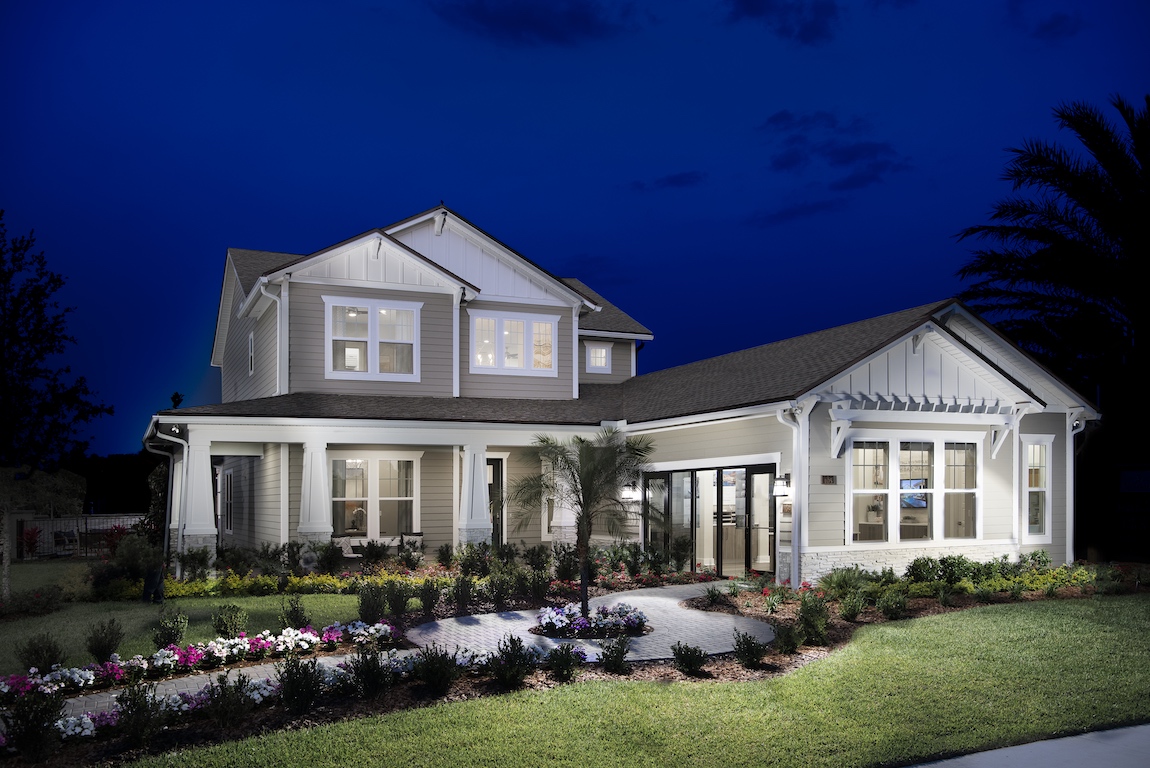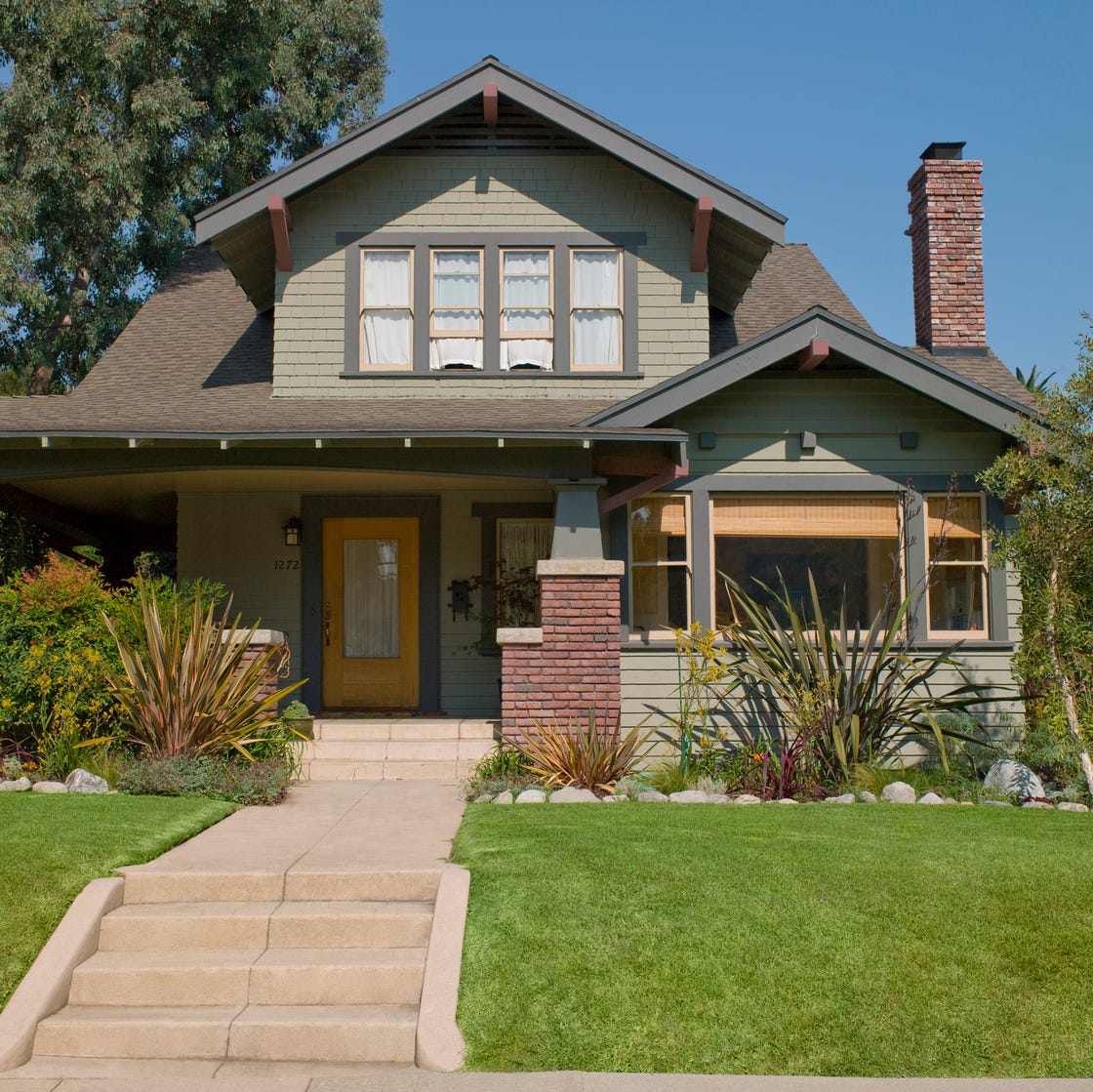The Role of an Architect in Designing a craftsman style house
The Function of Arts & & Crafts Architects in Elevating Architectural Services in Residential Layout
Arts and Crafts architects considerably influence residential layout through their dedication to craftsmanship and sustainability. They prioritize handcrafted information and all-natural products, which boost both aesthetics and community identification. By entailing clients in the style process, these architects develop special space that reverberate with personal preferences. This strategy questions regarding the future trajectory of household architecture and its possible effect on community characteristics. craftsman style house. What lies ahead for this ageless layout viewpoint?

The Concepts of Arts and Crafts Architecture
The significance of Arts and Crafts architecture lies in its dedication to workmanship and simpleness. This building motion arised in the late 19th century as a response to automation, highlighting the worth of handmade information and all-natural materials. The principles of Arts and Crafts architecture prioritize capability and harmony with the environment. Structures normally feature low-pitched roof coverings, large eaves, and subjected rafters, promoting a sense of unity with nature.
Artisans played a significant role in this style, typically integrating ornamental aspects like tarnished glass, tiles, and woodwork, which mirror local workmanship. The color scheme has a tendency to be natural and suppressed, permitting buildings to blend effortlessly right into their surroundings. Furthermore, the layout motivates open layout and public areas, promoting a sense of togetherness. In general, the principles of Arts and Crafts architecture celebrate the beauty of simplicity and the significance of human link to both nature and neighborhood.

Sustainable Practices in Residential Layout
While the need for ecologically liable living remains to expand, sustainable methods in household design have actually gotten considerable traction among architects and homeowners alike. Architects are increasingly incorporating energy-efficient modern technologies and lasting products into their styles, aiming to lower carbon impacts and improve energy preservation. Approaches such as passive solar design, environment-friendly roofings, and rain harvesting systems are becoming conventional components of modern property architecture.
The choice of locally sourced materials reduces transport exhausts and sustains regional economic situations. Focus on all-natural light and air flow not only boosts indoor air top quality yet also reduces dependence on man-made lighting and climate control systems. These lasting techniques mirror a commitment to protecting the setting while giving house owners with comfy, effective living spaces. As understanding of ecological issues expands, the assimilation of sustainability in residential style is poised to come to be a specifying characteristic of modern architecture, directed by the concepts established by Arts and Crafts architects.
Personalization and Personalization in Home Layout
Personalization and personalization in home design have actually become crucial trends in response to the growing need for special living settings that reflect individual preferences and way of livings. Property owners increasingly seek to customize rooms that resonate with their personal identifications, resulting in a more significant connection with their home. craftsman style house. This activity urges architects to engage customers in the design procedure, promoting partnership that ensures the last outcome symbolizes the house owner's vision
Elements such as bespoke formats, customized materials, and tailored coatings permit a diverse range of expressions in property layout. Arts and Crafts architects play a critical function in this development, highlighting workmanship and top quality. Their emphasis on incorporating creative aspects with capability assurances that each home is not just visually pleasing but additionally distinctly fit to the residents' requirements. Subsequently, this emphasis on customization boosts the total domestic experience, developing spaces that are both personal and long-lasting.

The Impact of Arts and Crafts Architects on Community Visual Appeals
As communities progress, the influence of Arts and Crafts architects greatly forms their aesthetic landscape. By stressing handmade information, all-natural products, and conventional construction techniques, these architects develop homes that reverberate with their surroundings. Their layouts frequently incorporate neighborhood vegetations, appearances, and colors, fostering a feeling of consistency in between developed atmospheres and nature.
In addition, the Arts and Crafts motion promotes community identity through architectural continuity. By urging homeowners to take on comparable layout concepts, communities create a cohesive character that boosts visual allure. This architectural harmony not just improves the visual experience however also infuses a sense of satisfaction amongst homeowners.
Additionally, the emphasis on sustainability and workmanship in Arts and Crafts architecture lines up with modern worths, making these layouts relevant in contemporary setups. Eventually, Arts and Crafts architects contribute considerably to the total elegance and cultural integrity of areas, leaving a long-term effect on their visual legacy.

Future Fads in Arts and Crafts Architecture
With an increasing emphasis on sustainability and personalization, future fads in Arts and Crafts architecture are positioned to blend traditional craftsmanship with modern innovation - craftsman style house. Architects are likely to focus on green materials, utilizing reclaimed timber and all-natural rock to boost the sustainability this of property styles. The assimilation of clever home technology will end up being typical, enabling for individualized living experiences without endangering visual stability
The resurgence of artisanal strategies will foster a restored admiration for handmade aspects, such as bespoke cabinetry and custom floor tile work. Future styles may additionally show a focus on community-oriented spaces, motivating communication and link amongst residents. Outdoor living locations will get importance, flawlessly incorporating nature into the home setting. As Arts and Crafts architecture advances, it will certainly proceed to recognize its roots while adapting to go right here modern requirements, creating unified areas that mirror private values and way of livings.
Often Asked Concerns
What Influenced the Arts and Crafts Motion in Architecture?
The Arts and Crafts movement in architecture was influenced by a response versus industrialization, emphasizing handmade top quality, all-natural products, and a return to conventional workmanship, intending to produce harmonious, useful areas that commemorated artistry and originality.
How Do Arts and Crafts Architects Collaborate With Customers?
Arts and crafts architects work together with clients through open dialogue, prioritizing individual needs and aesthetics. They stress workmanship and sustainability, cultivating a partnership that integrates the client's vision with the designer's knowledge in style and materials.
What Products Are Frequently Used in Arts and Crafts Houses?
Usual materials in Arts and Crafts homes include natural wood, stone, and brick, emphasizing workmanship and natural aesthetic appeals. These elements produce a cozy, welcoming ambience, showing the activity's dedication to quality and simpleness in style.
Just how Do Arts and Crafts Styles Boost Indoor Living Areas?
Arts and Crafts layouts improve indoor home by advertising all-natural light, open flooring plans, and handcrafted information. These components promote a cozy, inviting atmosphere, motivating a link between locals and their settings through thoughtful, functional aesthetic appeals.
What Are Some Famous Examples of Arts and Crafts Architecture?
Famous examples of Arts and Crafts architecture include the Wager Home, Greene and Greene's work of art in California, and the Robie Residence by Frank Lloyd Wright. These structures showcase handcrafted information and harmony with nature, defining the anchor movement's significance.